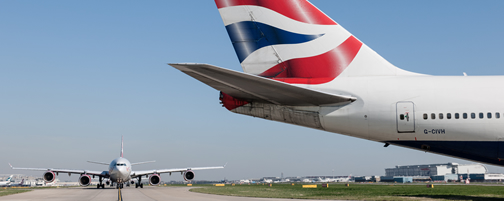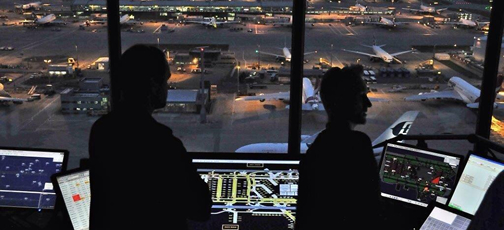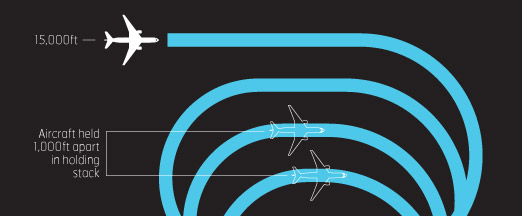Explaining Time Based Separation at Heathrow
28 February 2014The ongoing debate about airport capacity isn’t just about runways, it is also about resilience to challenging weather conditions.
Heathrow is the busiest two runway airport in the world, handling over 470,000 flights a year. It is also scheduled to 99% of its capacity, meaning any impact on landing rate – the number of aircraft that land per hour – can have major implications, namely delays and an increased chance of cancellations.
The biggest single cause of delay to Heathrow arrivals is strong headwinds on final approach. Currently, there are about 60 days a year when there is significant delay as a result of headwinds. On bad days the delays can easily exceed 12000 minutes, meaning inconvenience and frustration for airlines, airports and of course passengers.
VIDEO: London Heathrow approach time lapse video from CargoSpotter.
To help address this, we’re planning a new method for managing arrivals at Heathrow that, when it becomes operational in Spring 2015, should significantly reduce these delays. Time-based separation (TBS) will mean that instead of separating aircraft by distance, we separate them based on time.
Dealing with strong headwinds – Time Based Separation (TBS)
Many factors feed into TBS but at the heart is understanding the behaviour of wake vortices – invisible spirals of air created by aircraft; I talked about this is a bit before in one of my previous posts.
 IMAGE: Wake vortices courtesy of berkuspic
IMAGE: Wake vortices courtesy of berkuspic
Over the last 3 years, we’ve measured the wake vortex behaviour for over 100,000 flights. Analysis of this data confirms the theory that in headwind conditions, the wake vortex dissipates faster, therefore allowing aircraft to safely fly closer together on final approach.
Using this information, we’re developing new tools that will use real-time wind data to feed into a “TBS tool”. This tool will provide our Air Traffic Controllers with real-time separation indicators. They can then use this to manage aircraft arriving into Heathrow. We’ve prepared an infographic which explains how TBS works.
You can view a larger PDF version of the infographic here.
Can’t see the infographic? View a PDF version here.
Benefits
The introduction of TBS at Heathrow will be a world-first and deliver major benefits to the airlines and the flying public. We expect it to reduce headwind delays by at least 50%, reducing arrival delays by circa 80,000 minutes a year.
The benefits may be even greater as that figure doesn’t include any knock on effect – delays to an arriving flight can mean a delay for the aircraft’s next flight and on some days can ultimately lead to flight cancellations, if crew reach flying time limitations or flights at the end of the day run up against night curfews.
So we hope that from next spring you’ll notice a difference in the number of delays and cancellations you see on those windy days at Heathrow!
Comments
Please respect our commenting policy and guidelines when posting on this website.




12.04.2015
17:49
Jay
What about using time based separation even with only light headwinds? Will this increase movements even further?
26.10.2018
10:28
Frank Lindenmayer
What’s meant in “real-time” wind? Is this a calculation of wind at 3000 ft or 4000 ft on Final from which value ground wind on runway or wind Information from aircraft by difference of IAS/TAS/GS?